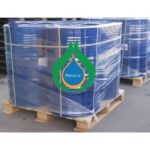Aluminum sulfate is a chemical compound that’s sometimes referred to as sulfuric acid, aluminum salt, or cake alum. It has a wide variety of applications, including waste treatment, water purification, and paper manufacturing.
Aluminum sulfate Chemical Properties
Aluminum sulfate is an odorless, white, or off-white crystalline solid or powder. The compound is made by adding aluminum hydroxide to sulfuric acid. It’s hygroscopic, which means it has the ability to absorb and hold water molecules from the surrounding atmosphere. It’s also water soluble and not volatile or flammable. Aluminum sulfate is extremely acidic. When combined in solution with water its pH can be less than two, which can make it capable of burning human skin and corroding metal.
Ways to Use Aluminum sulfate
Aluminum sulfate has a wide and diverse range of uses. One of its primary uses is to help with filtering in water purification. The aluminum sulfate causes impurities in the water to clump together so they’re more easily removed. It’s also used to dye cloth, kill certain kinds of slugs and insects, and relieve pain. Aluminum sulfate is often found in baking powder and occasionally in antiperspirants. Gardeners even use aluminum sulfate to increase the acidity of soil.
Dangers of Using Aluminum sulfate
Aluminum sulfate is harmful if swallowed or inhaled. Inhalation causes coughing and potentially shortness of breath. Upon contact with skin or eyes, aluminum sulfate causes irritation, redness, itching, and pain. Eating or swallowing aluminum sulfate produces severe irritation to the intestines and stomach. An affected person may experience vomiting, nausea, and diarrhea. In addition, adding water to aluminum sulfate can cause sulfuric acid to form. This compound can cause severe burns if it touches exposed skin.
First Aid
If aluminum sulfate comes in contact with eyes or skin, flush or wash the affected area for 15 minutes with water. Upon inhaling the substance, move away from the toxic area and slowly breathe fresh air. For ingestion of aluminum sulfate, drink a glass of milk and then force vomiting. Do not use bicarbonate; it’s an explosive combination, literally. Finally, if the aluminum sulfate comes into contact with skin, remove contaminated clothing and wash the skin.
Handling and Storage of Aluminum sulfate
Store aluminum in a cool, dry area in a sealed container, and don’t mix with other substances. Take care that the aluminum sulfate does not get wet because it can absorb water, which causes the surfaces it touches to become slippery. Aluminum sulfate can also leave a light residue in containers where it was stored. Sweep or shovel spills of the compound and place in a covered container. Wash down residue with large amounts of water and neutralize with soda ash or lime, if necessary.
Aluminum sulfate is used for a wide variety of purposes in both industrial and home settings. However, because it’s a very acidic compound, there are some basic safety precautions you must take when using it. Make sure you know what they are so you stay safe!




